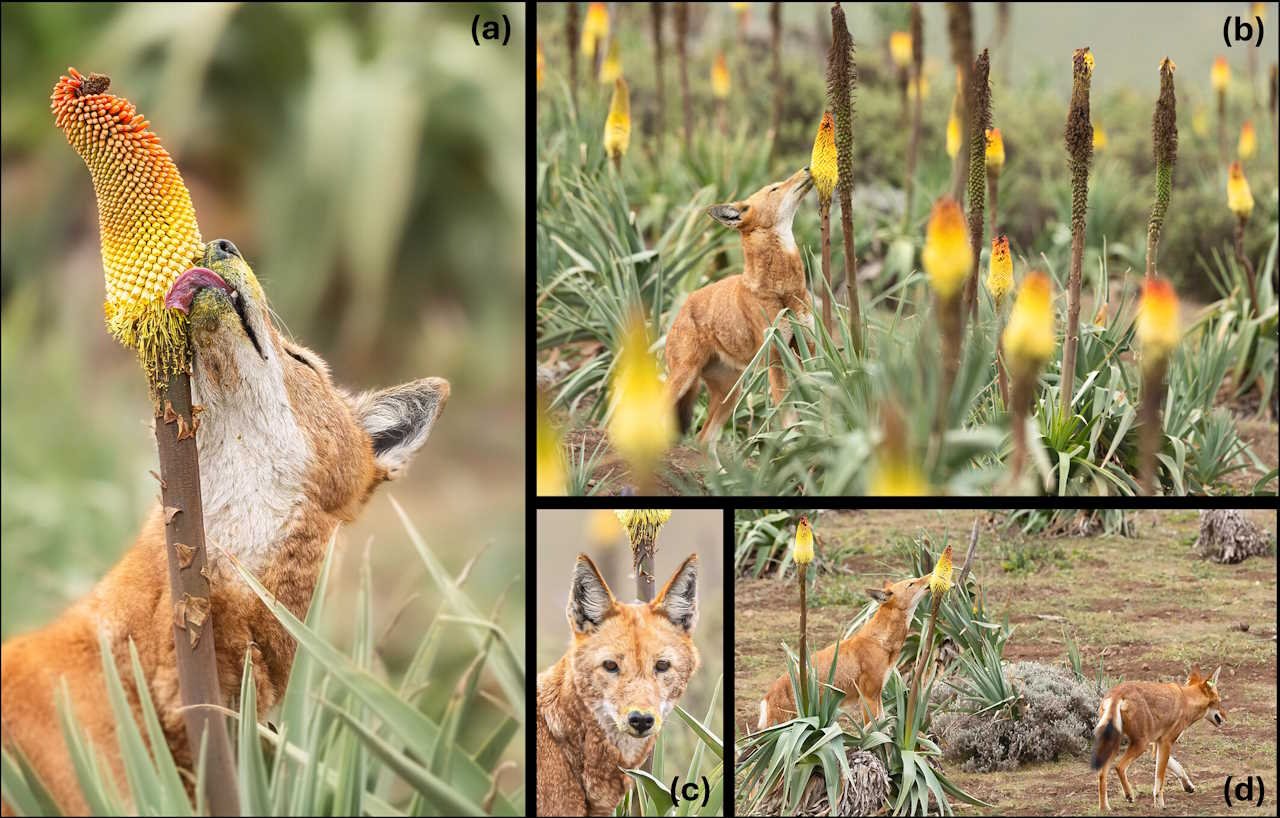Ethiopian wolves fell in love with nectar and became pollinators of flowers

Ethiopian wolves, which are the rarest and most extinct species of the canine family, turned out to be nectar lovers and pollinators of African flowers. Scientists assume that they are the first known large predators-pollinators, because previously only smaller mongooses and representatives of the weaver family were noticed feeding on nectar.
Interestingly, African flowers themselves have a structure that facilitates their pollination by mammals. The new discovery underscores the need to more closely study interactions between plant and animal species, especially non-obvious ones, in order to preserve these species. The research was published in the journal Ecology.
How have predators been linked to flower pollination?
Zoologists monitored populations of rare Ethiopian wolves (Canis simensis), which are the first large carnivores to regularly feed on nectar. Presumably, for wolves, nectar is not a significant source of energy, instead it can act as a kind of dessert. As scientists discovered, Ethiopian wolves regularly visited the flowers of Kniphofia foliosa, collecting nectar from 1-30 individual inflorescences at a time. This flower has adaptations for pollination by mammals, in particular, strong flowers, elongated stamens and a significant amount of nectar, and representatives of various wolf packs feed on it.
And although this indicates the possibility of pollination of flowers by wolves, its effectiveness, that is, the frequency of fruit formation after pollination, scientists plan to investigate later. They are also going to compare the efficiency of Ethiopian wolves as pollinators with other animals, such as insects and birds, that are more likely to carry pollen from other flowers. Since both wolves and plants live mainly in the highland grasslands of Ethiopia, they may have evolved together to get the most benefits from coexistence. Their research will reveal more about the evolution of symbiotic relationships between animals and plants.